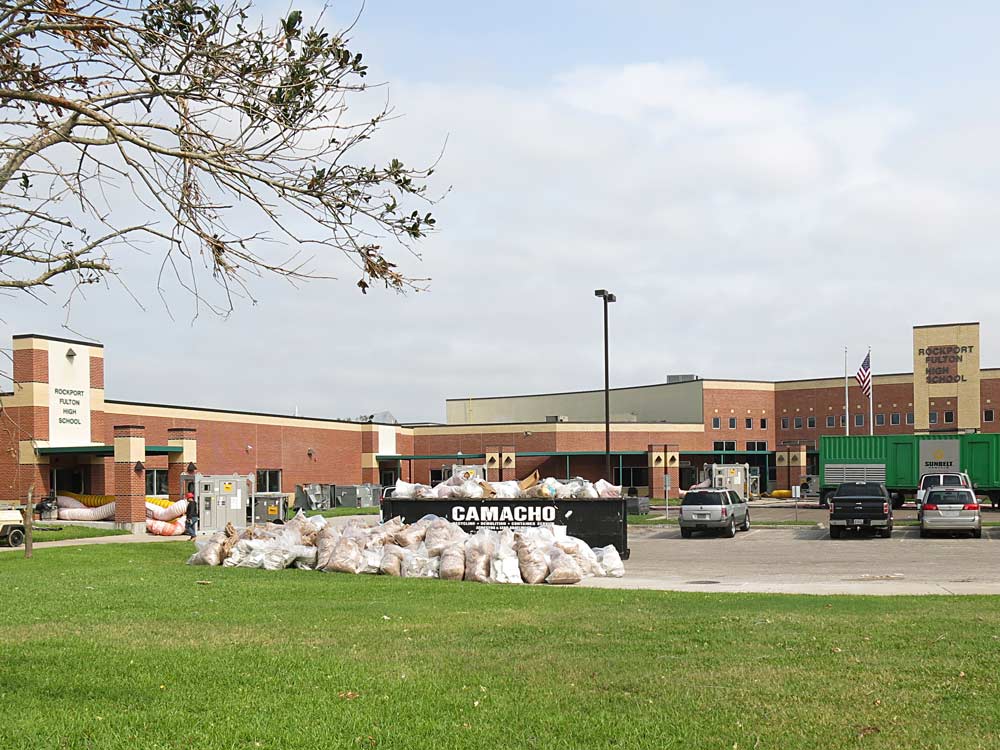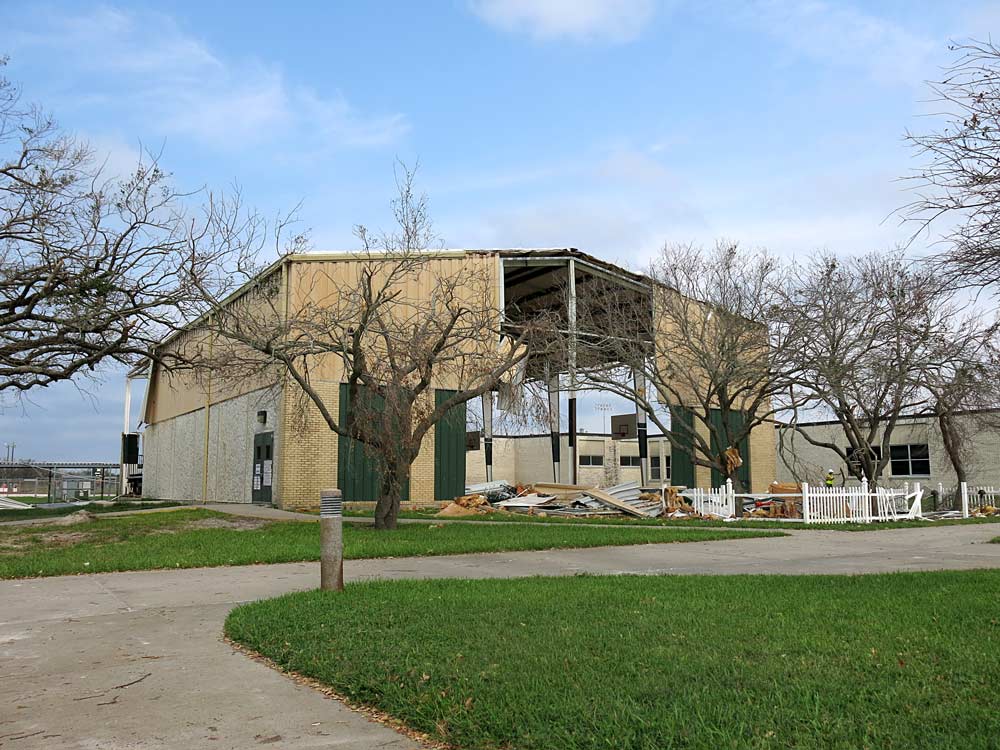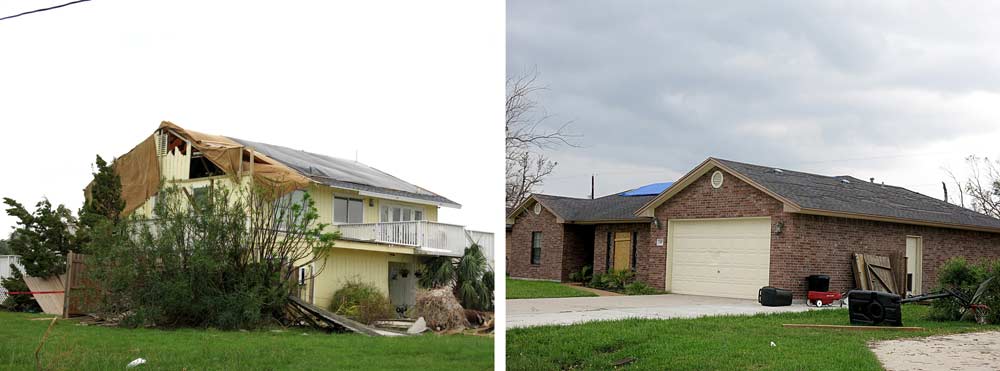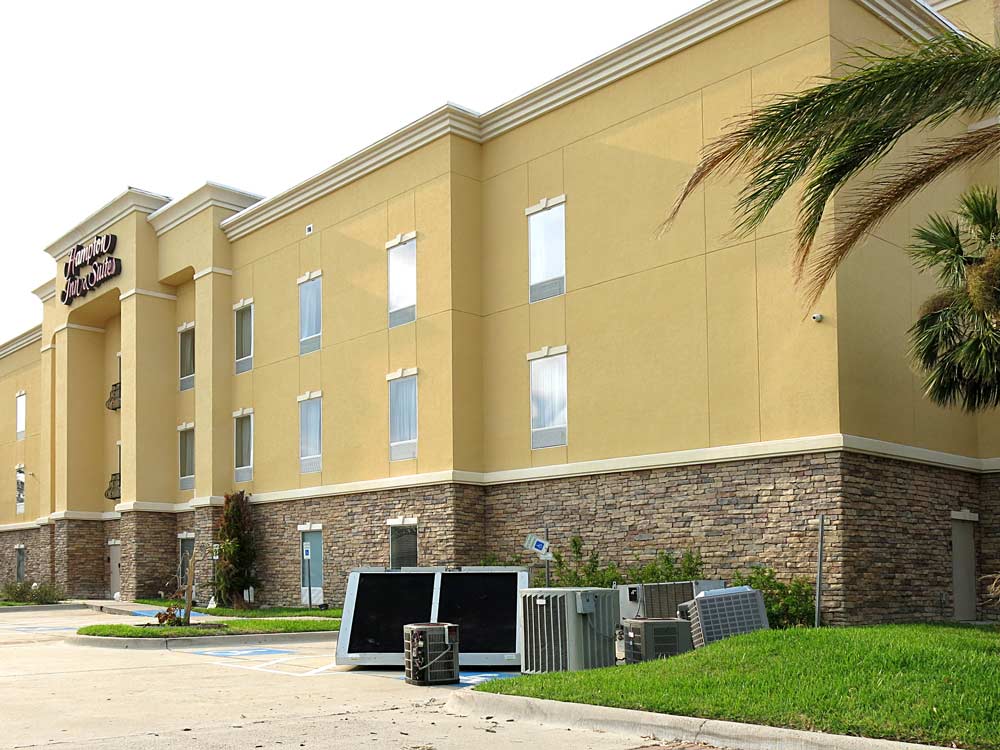AIR’s damage survey team arrived in Texas on Tuesday evening and spent Wednesday in Rockport, a small coastal city that took the brunt of Harvey’s Category 4 wind speeds at landfall. We studied both engineered and non-engineered structures in an effort to understand the type of damage caused by the storm and the structures’ failure mechanisms.
The Heavily Damaged Rockport Fulton High School
Damage to the HVAC equipment on the roof of Rockport’s high school led to significant water intrusion and contents damage. This is clearly apparent in Figure 1 by the amount of soggy insulation put out in front of the school building, as well as the vacuum pump tubing snaking into the entrances. Other than the roof, little physical damage was visible to the main school building.

However, this was not the only building that sustained damage on campus. The gymnasium (Figure 2) sustained major physical damage—one entire side wall of the structure was completely destroyed, and the roof and front of the structure were also significantly damaged. Notice, too, the trees stripped bare of leaves.

Distance from the Coast Matters
We visited two residential neighborhoods in Rockport. The first, Key Allegro, was right next to the shore, while the second was about a mile and a half from the shoreline. Nearly all of the structures in Key Allegro sustained some degree of damage, and we saw states of damage ranging from minor roof damage to complete collapse. It was evident that, in general, newer structures performed better than older structures, which can be attributed at least in part to building codes. Residents of the community also commented that construction practices played a role, as homes built by some contractors fared better than homes built by others.
The inland neighborhood overall fared much better than the coastal neighborhood. Some inland single-family homes seemed almost untouched, while others sustained roof damage or were missing wall siding. A representative photo showing damage from the coastal community is shown in Figure 3a. Notice the damage to the roof and wall, which led to water intrusion and significant contents damage. A representative photo showing damage from the neighborhood further inland is shown next to it in Figure 3b, where we see some damage to the roof covering and, under the blue tarpaulin, to the roof itself.

Damage Mechanisms and Engineered Structures
Near the coast, we did see damage to engineered structures—in some cases, significant. Structures that did not sustain significant physical structural damage, among them hotels and large retail stores, were nevertheless still closed almost two weeks after Harvey’s landfall due to water infiltration. In many of these cases, rooftop equipment was damaged, leading to roof damage and significant water intrusion—as was the case with the high school. For example, we found a Hampton Inn (Figure 4) that had little obvious physical damage from the street. Some windows were broken and the structure was clearly not operational. The damaged rooftop equipment was sitting in the parking lot, suggesting that roof damage had been one source of water intrusion.

We’ll be back with more of our observations tomorrow!



